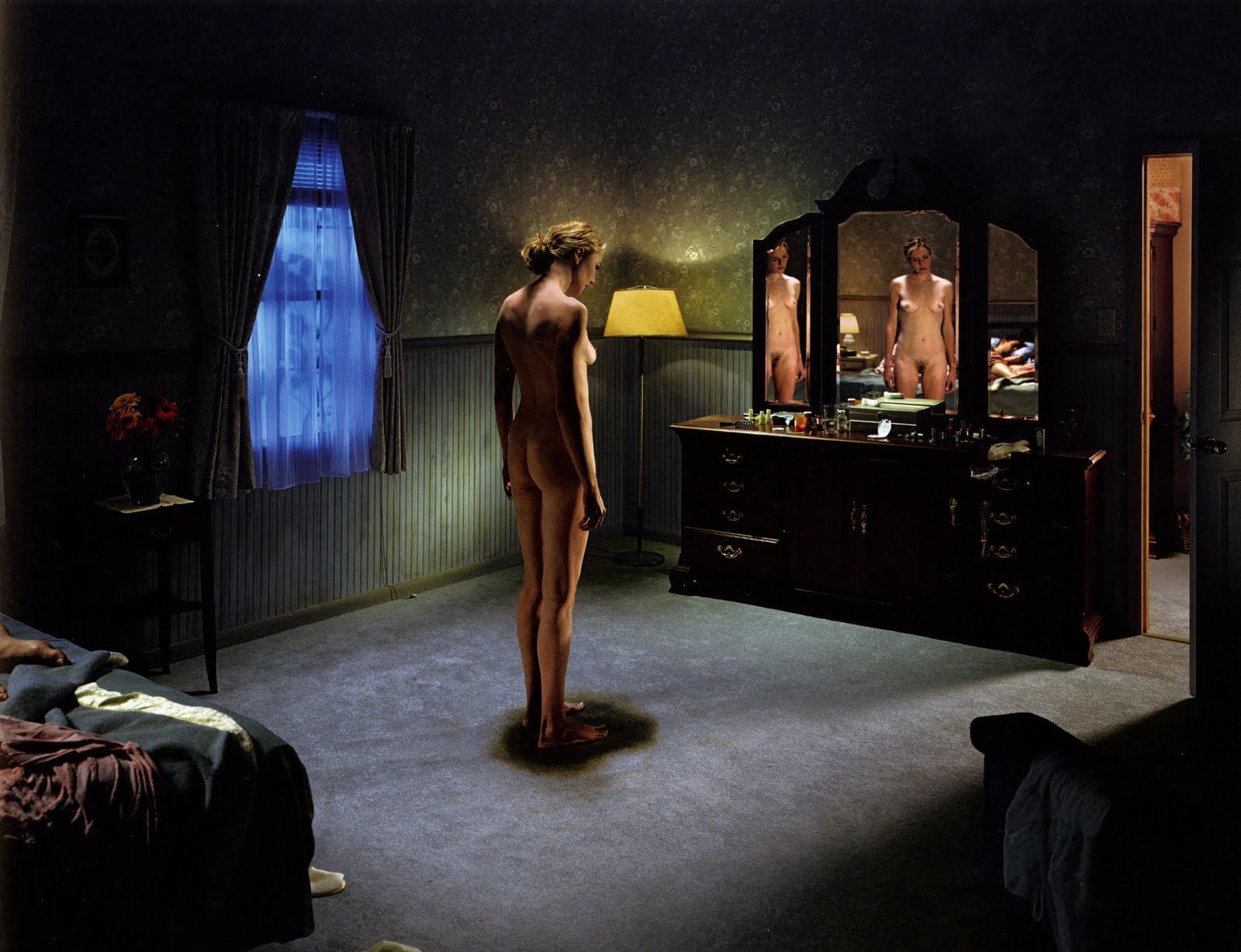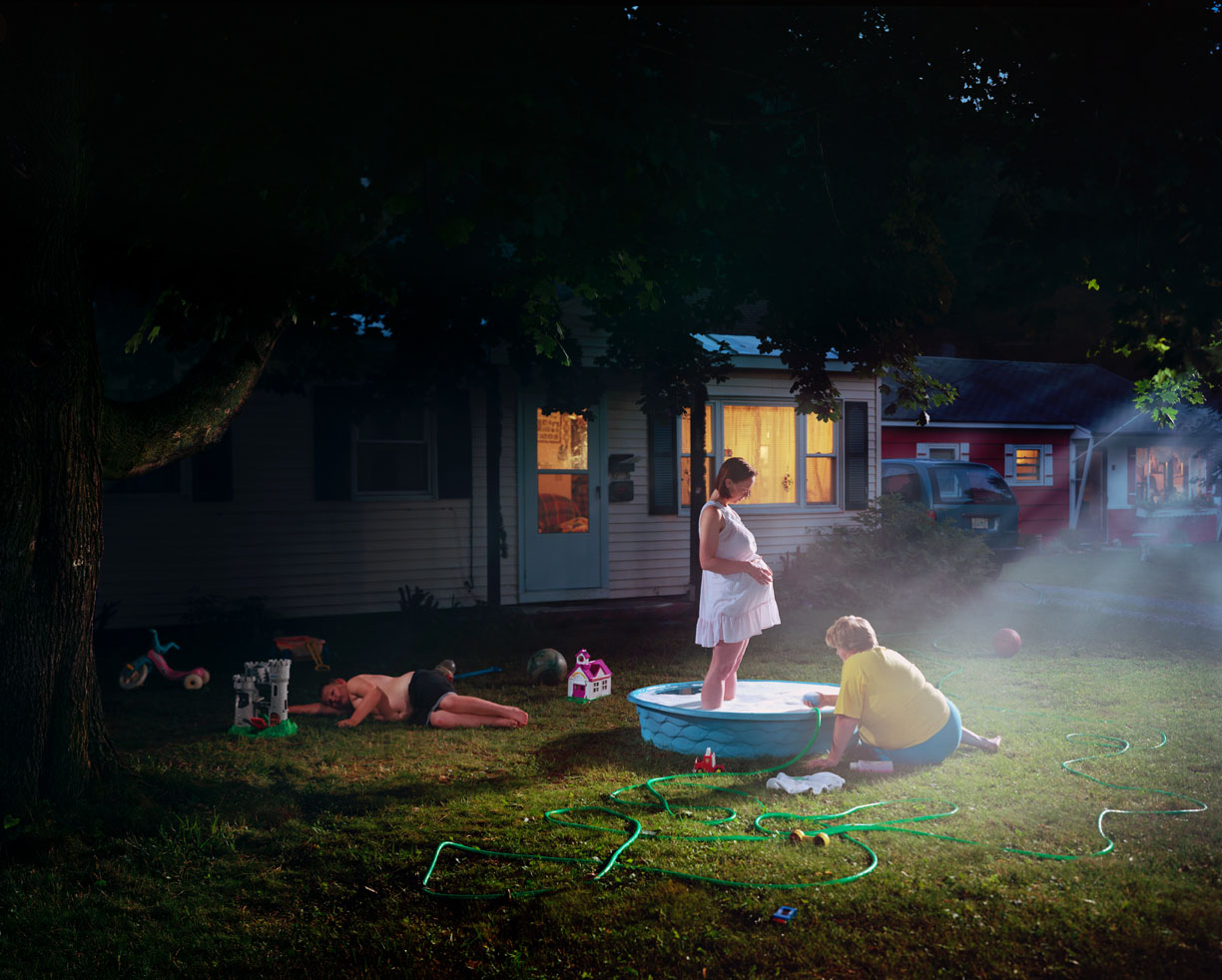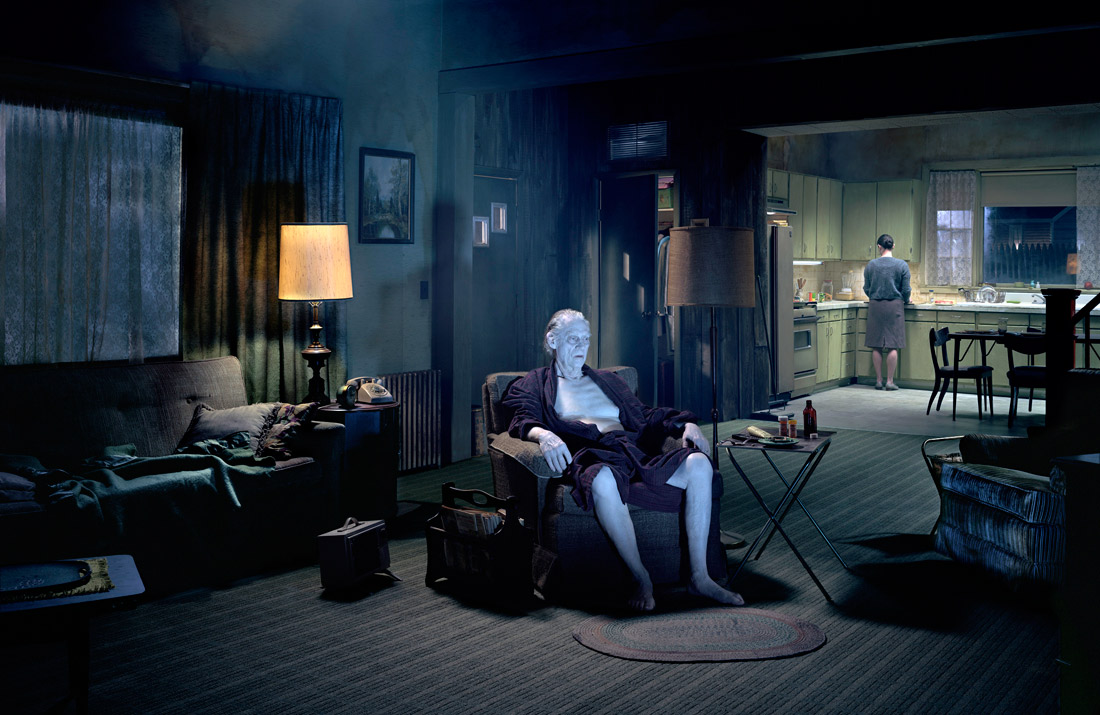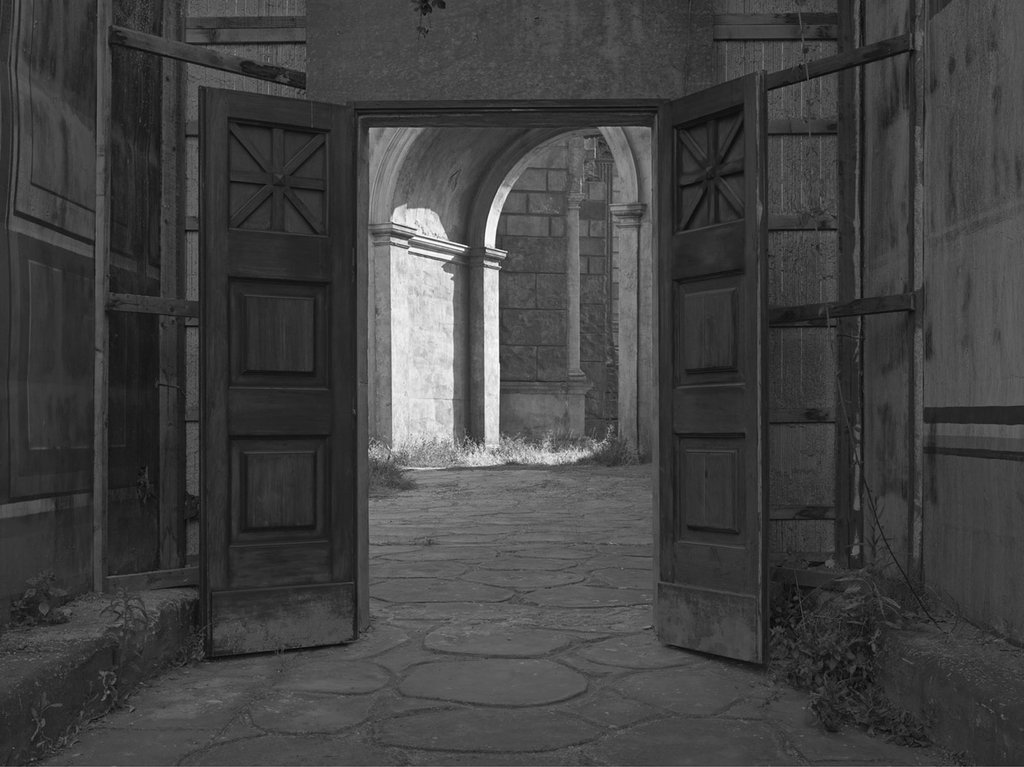The work of Gregory Crewdson got mentioned in class, and at the time it didn’t click, but I’ve actually seen his work before in a show called “Photographers at Work”, alongside other professionals.
He is an American photographer who is best known for his for elaborately staged scenes of American homes and neighborhoods.
Crewdson works with a production team of up to sixty people, including a cinematographer and director of photography.
Below are some examples of his work:












“American artist Gregory Crewdson (b. 1962) has said that his elaborately constructed melodramas are influenced by his memory of childhood. His psychoanalyst-father’s office was in the basement of their New York City home, and Crewdson would press his ear to the floorboards to try and imagine the stories being told in the therapy sessions. In the mid1990s, Crewdson’s tableau photographs were set in models of suburban backyards and undergrowth built in his studio. They are a mix of the bizarre and the disturbing, yet are so highly camp and entertaining. Stuffed animals and birds perform strange and ominous rituals, while plaster casts of Crewdson’s body are shown being slowly devoured by insects, surrounded by lush foliage. Crewdson later shifted into a more directorial mode. In his black-and-white series Hover (1996-97), he staged strange happenings in suburban housing areas, photographing them from a crane above the rooftops. More recently, in his Twilight series, he worked with a cast and crew of the kind found on a film set. Here it is not only the display of rituals and the paranormal but also the construction of archetypal characters who carry out these acts that create the psychological drama. Significantly, at the back of the book about the Twilight series is a ‘documentary views’ section that shows the entire production process, the crew members, and the moments before and after a photograph is taken, confirming the degree to which Crewdson’s tableau photography is a production issue.”
(The Photograph As Contemporary Art by Charlotte Cotton, p.67-68)
1336420877233.jpg)
“The sinister and seething underbelly of suburbia has long been a source of inspiration for artists. Built as aspirational and almost paradisiacal habitats for the middle classes, these areas outside of the city centre become, for American artist Crewdson, sites for bizarre and unexplainable happenings. Tapping into a host of paranoid fears, it is as if the lid has been lifted to expose the fantasies and anxieties of those living there. The Sanctuary photographs, featured here, we shot on location in the Cinecittà Studios in Rome and the series is Crewdson’s first to be shot outside America. Here his focus has shifted from dramas being played out to scenographic architecture.

‘My first impulse is to make the most beautiful picture I can. But then I’m always interested in this idea of a kind of undercurrent in the work. I think of that completely in psychological terms. The perfect façade and what’s beneath the surface of that façade. I’m very interested in the uncanny and a way of looking to find something mysterious or terrible within everyday life. For better or for worse, a lot of my newer pictures seem less dark. The uncanniness is less explicit and more poetic in feel.
I have always been very interested in the idea of telling a story, in narrative and the limitations of photographs. Where other more traditional modes of story-telling such as film and literature move forward in time the photograph is still and frozen. From day one, I have been interested in taking that limitation and trying to find the strength in it – like a story that is forever frozen in between moments before and after and always left askind of unresolved question.

Even though my work is primarily influenced by film, I consider myself first and foremost a photographer. I like the idea that I am able to instil, in a single moment, every imaginable kind of production crew technique to make a perfect image. I work with a production crew of about sixty people. Almost every one of them comes out of a film background. There are two essential ways in which we work. One is on a sound-stage in a big studio. We build everything up from nothing. The second is on location. On location it’s pretty much like a film crew coming to town and there’s a huge amount of interaction between the crew and the town and the people who live there. There are also months of planning. The big difference is that with a film crew there is a rush to get many different scenes or shots done over the course of a day, whereas we usually spend two or three days working towards making enormous production and so many people working on the pictures, the pictures themselves are very quiet, very still and emptied out in a certain sense.

I think my pictures are really about a kind of tension between my need to make a perfect picture and the impossibility of doing so. Something always fails, there’s always a problem, and photography fails in a certain sense. It’s so limited. Despite the fact that we work enormously in post-production, reproduction is reproduction and it will always, one way or another, fail you. This is what drives you to the next picture.'”
(Art Photography Now by Susan Bright, p.80-83)
He has cited the films Vertigo, The Night of the Hunter, Close Encounters of the Third Kind, Blue Velvet, and Safe as having influenced his style, as well as the painter Edward Hopper and photographer Diane Arbus.
He is now a professor at Yale University and his photographs have sold for up to $150,000!
A fellow classmate posted the link to the video I saw on TV, which is definitely worth watching:
I personally find it insane how time consuming and expensive it must be to set up to shoot. Although I like the result, the thought of the whole process behind it makes me uncomfortable. Even for a perfectionist like me!!
But the aesthetics are pleasing to the eye, and I quite like the highly processed effect, the lighting and the mood. Many of them do look like they belong to a different world.
Sources: Art Photography Now, by Susan Bright, The Photograph As Contemporary Art, by Charlotte Cotton and internet.
